Text by Attilia Fattori Franchini about Lisa Stuckey's work
Booklet published by the Academy of Fine Arts Vienna on the occasion of the Mentoring-Program 2020/2021.
With a text by Attilia Fattori Franchini about the work of Lisa Stuckey, whose mentor was Christine Lang.
Lisa Stuckey
“The one thing that doesn't abide by majority rule is a person's conscience.”
To Kill a Mockingbird, 1962
Stop.
Rewind. Play.
Lisa Stuckey is a writer, scholar and artistic researcher. Her work intersects text and image montage, sound, film installation and exhibition-making through dialectics to analyse architectures and their intersection with psychoanalytic and postmodern theories.
Stop. Rewind. Stop.
Rewind. Rewind. Cut.
Investigative aesthetics are at the centre of Lisa Stuckey’s work. As a proficient detective, she uncovers, connects and repurposes personal and collective histories, tropes and archetypes. At the centre of her research is often the cinematic disposal, its lexicon and architecture critically employed to analyse and confute power structures.
Cut. Zoom in. Cut.
Play.
Can a practice be in constant (R)evolution? How fixed should our gaze be? Exploring the idea that truth is singular and conveyed by its systems of representation (language, narration, architecture) or medium (text, film, sound) Stuckey adopts an open approach towards roles and methodologies of inquiry.
In the work Four Siblings (2014) she employs her grandmother’s 8mm and Super8 film archive to question the genre of amateur film and the perspective of the filmmaker through an autobiographical yet sensitive perspective. Using a selective editing process, she takes the found material as a complex family constellation, both universal and particular—to critically reflect on archiving and memory. We follow the stories of a family in the second half of the twentieth century between Austria, Germany and the United States represented through an eventful lens of birthdays, journeys, encounters and farewells. An intricate net of familiar relationships, gender stereotypes and historical accounts emerges along a critical reflection on the family video genre and its power to convey an idealized representation of family systems. In ANTI PREDATOR ADAPTATION (2015, in collaboration with Jessyca R. Hauser) Stuckey continues her interest in found images and the different spaces of artistic representation—a gallery, a cinema and a natural history museum—merging them into a unique arena of confrontation. Influenced by a close reading of Jean Laplanche and Jean-Bertrand Pontalis’ The Language of Psycho-Analysis (1967/1973), the work mimics animal defence mechanisms to question the artistic process of self-definition.
Stuckey’s practice has in recent years focused primarily on research employing writing and the curatorial as tools to define and dissect how contemporary systems of value are constructed and narrated. The project Posthuman Complicities (2017, in collaboration with Andrea Popelka) imagines oceans as a place of violence and resistance through a non-binary and post-colonial lens. The exhibition Nor Heat Nor Gloom Of Night (2018, in collaboration with Johanna Braun) observes the post office as a transitional construct oscillating between private and public to unfold structural questions of exchange and migration.
Her most recent Fama Facing Trial: Words as Currency (2020) consists of a multi-media installation and is thematically connected to an upcoming publication under the title Forensische Verfahren in den zeitgenössischen Künsten / Forensic Architecture und andere Fallanalysen (2022). The courtroom is central to the Greek notion of polis, expanding the city as a political construction; it is also an aggregate of definitive venues for civic practices: political, artistic, historical and religious. Taking various architectures of jurisdiction as a socio-culturally built archetype and the subject of critical analysis, Stuckey uses it as a tool of structural, historical and artistic investigation across various fields, such as cinema, language and psychology. The technique of courtroom sketching in the video X-Y-Z (2020) introduces viewers to judicial media-architectures to create a parallel between the court and the gallery, whilst the work Fama Facing Trial (2020) layers a mixture of text, footage and audio fragments––from films such as Anatomy of a Murder (1959) or Judgment at Nuremberg (1961)––through the technique of shot-reverse-shot to offer a deconstructed image of the courtroom and the formats of judgement. Mixing inputs taken from different sources, consciousness starts to drift along our sense of law. What emerges is a test of law and forensic activity itself—Stuckey calls it “Law on Trial”— scrutinising performance enacted by the state imagined as a collective body.
Attilia Fattori Franchini
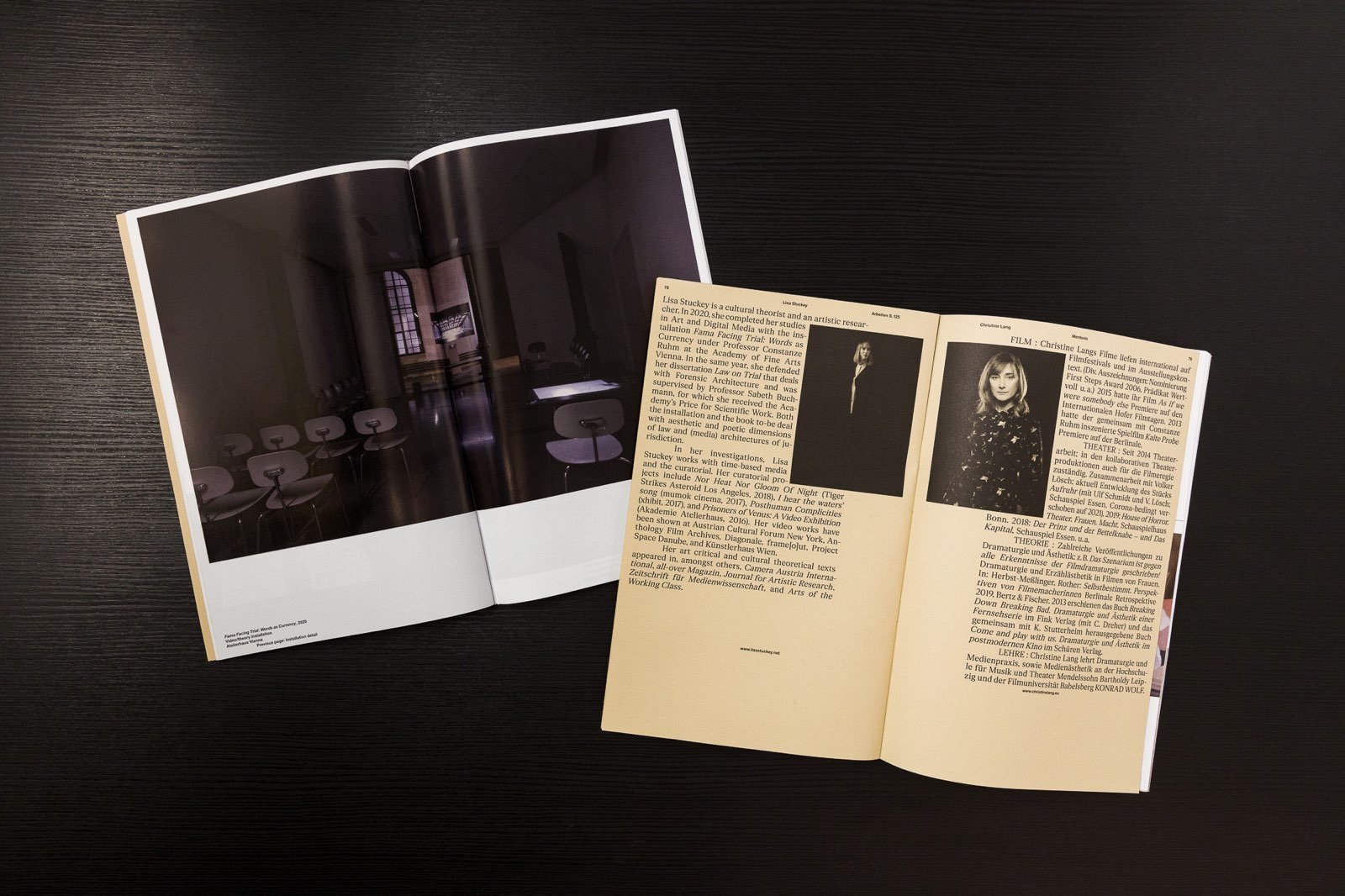
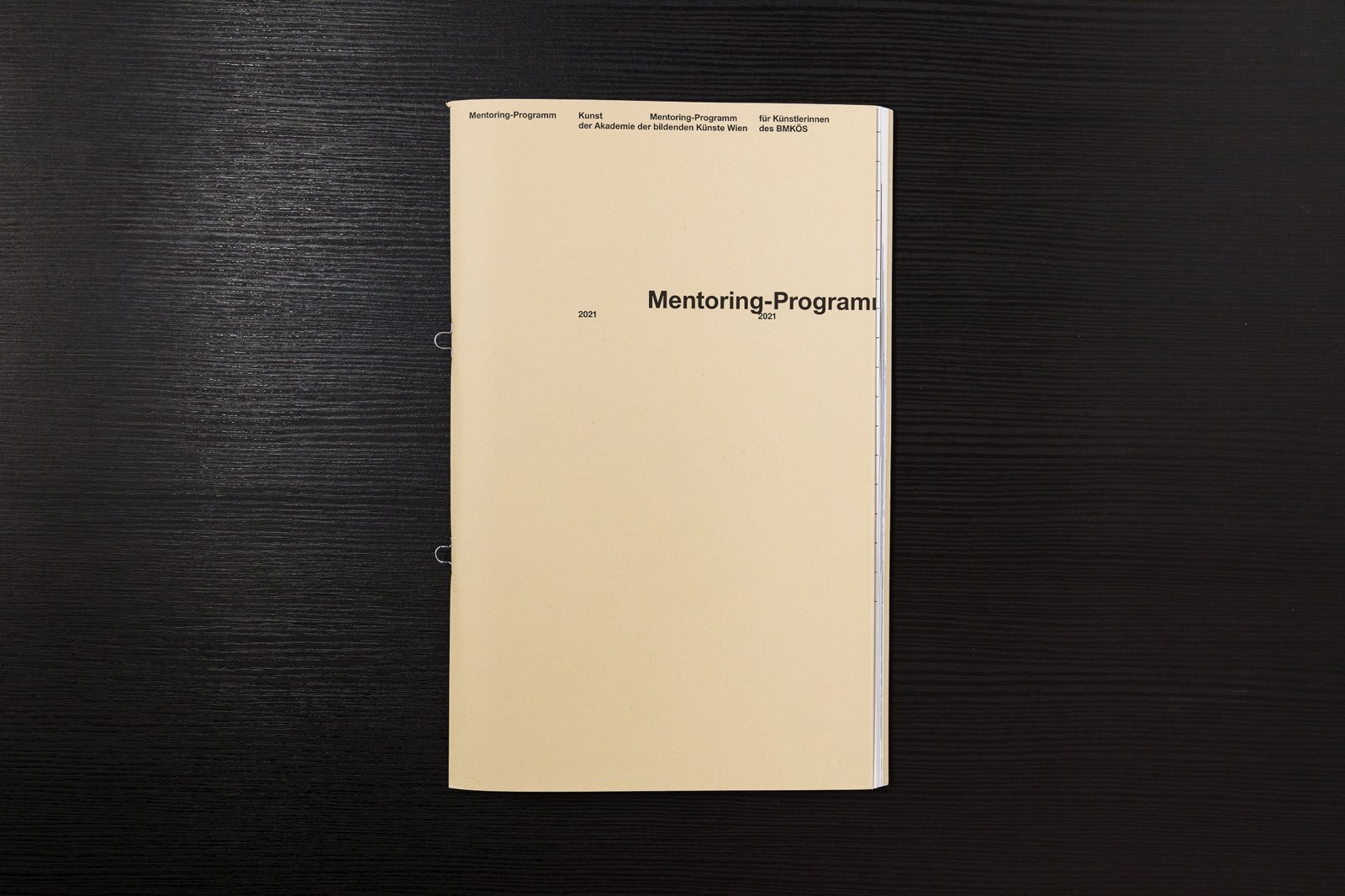

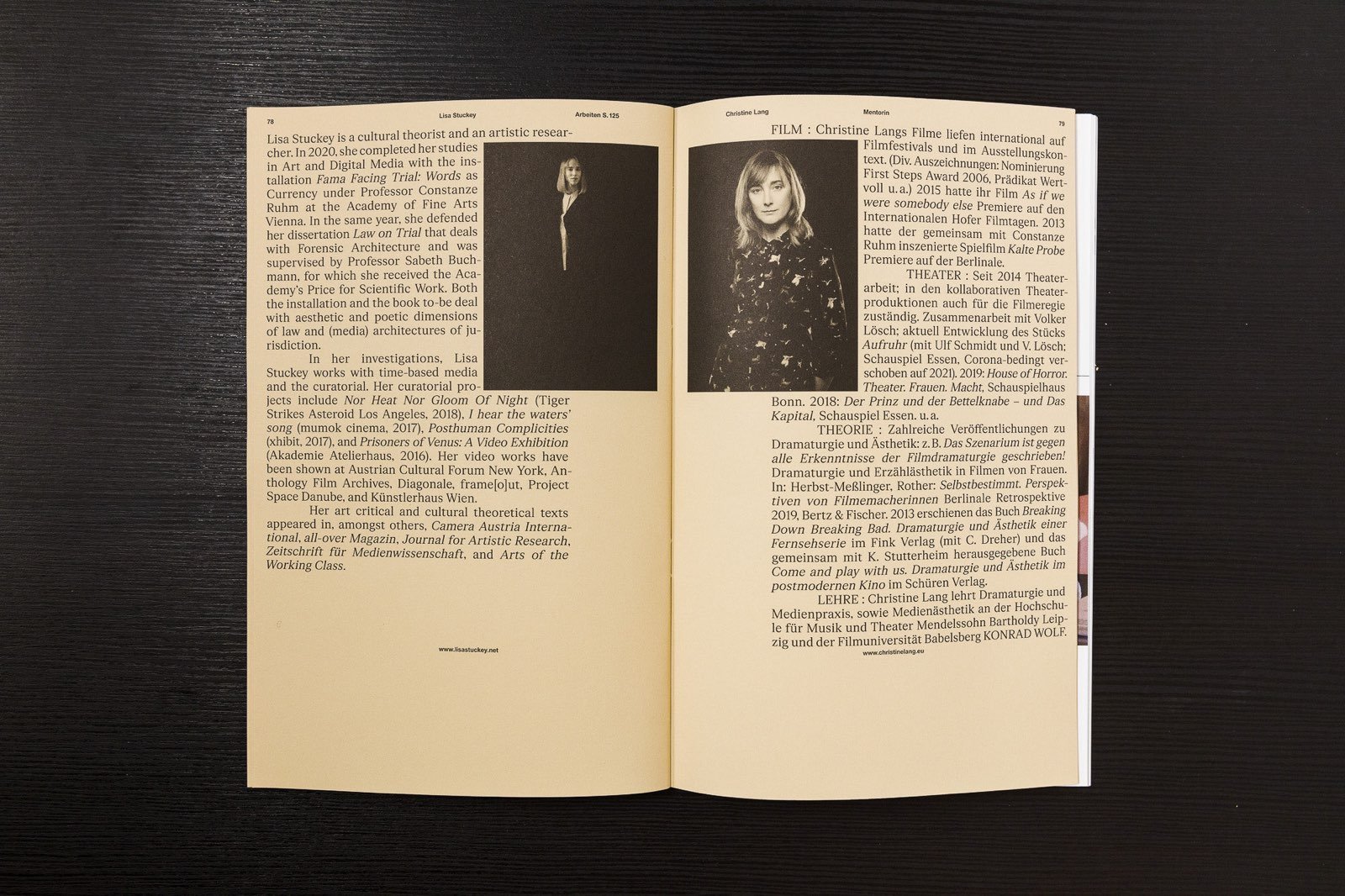

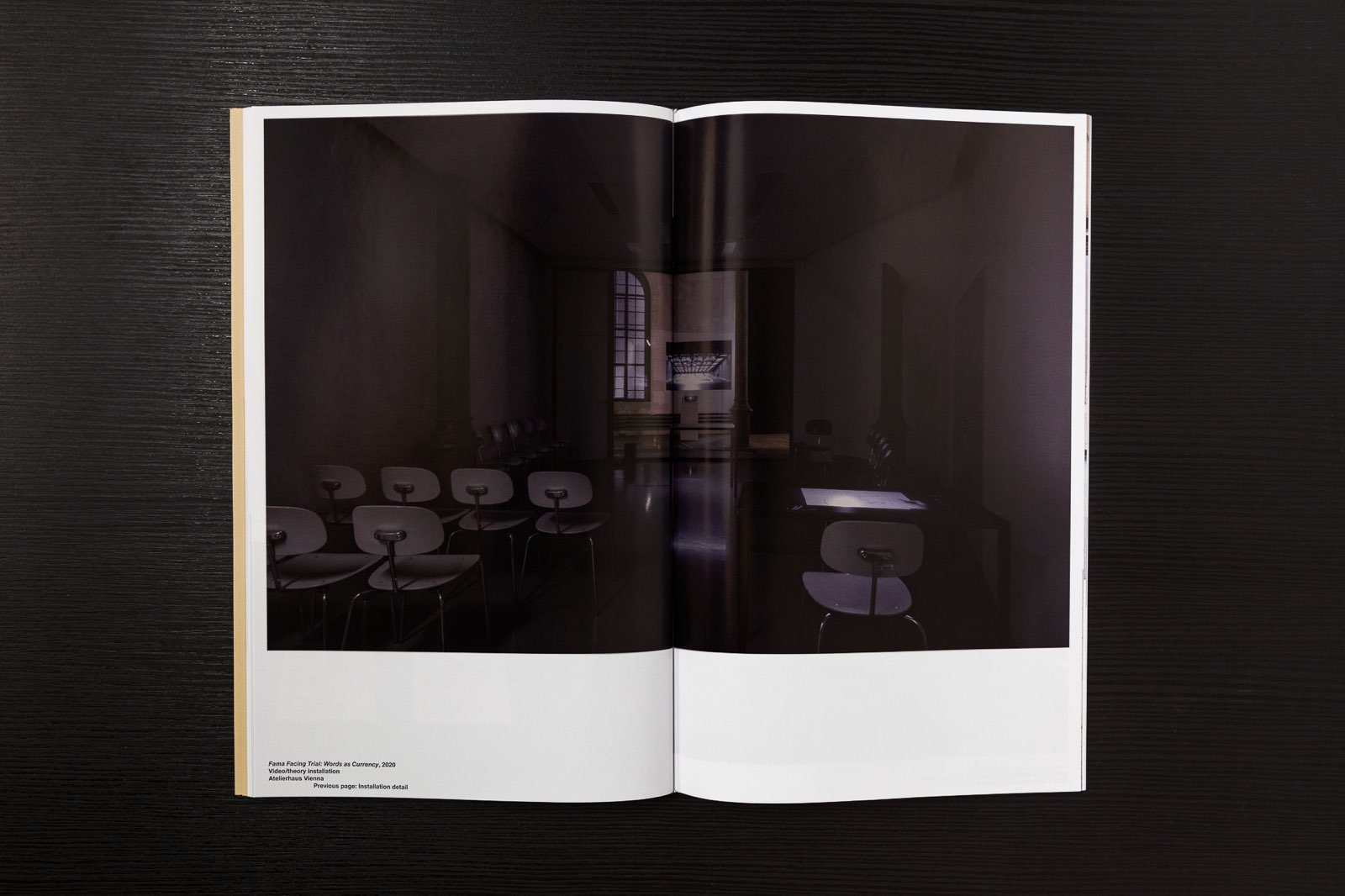
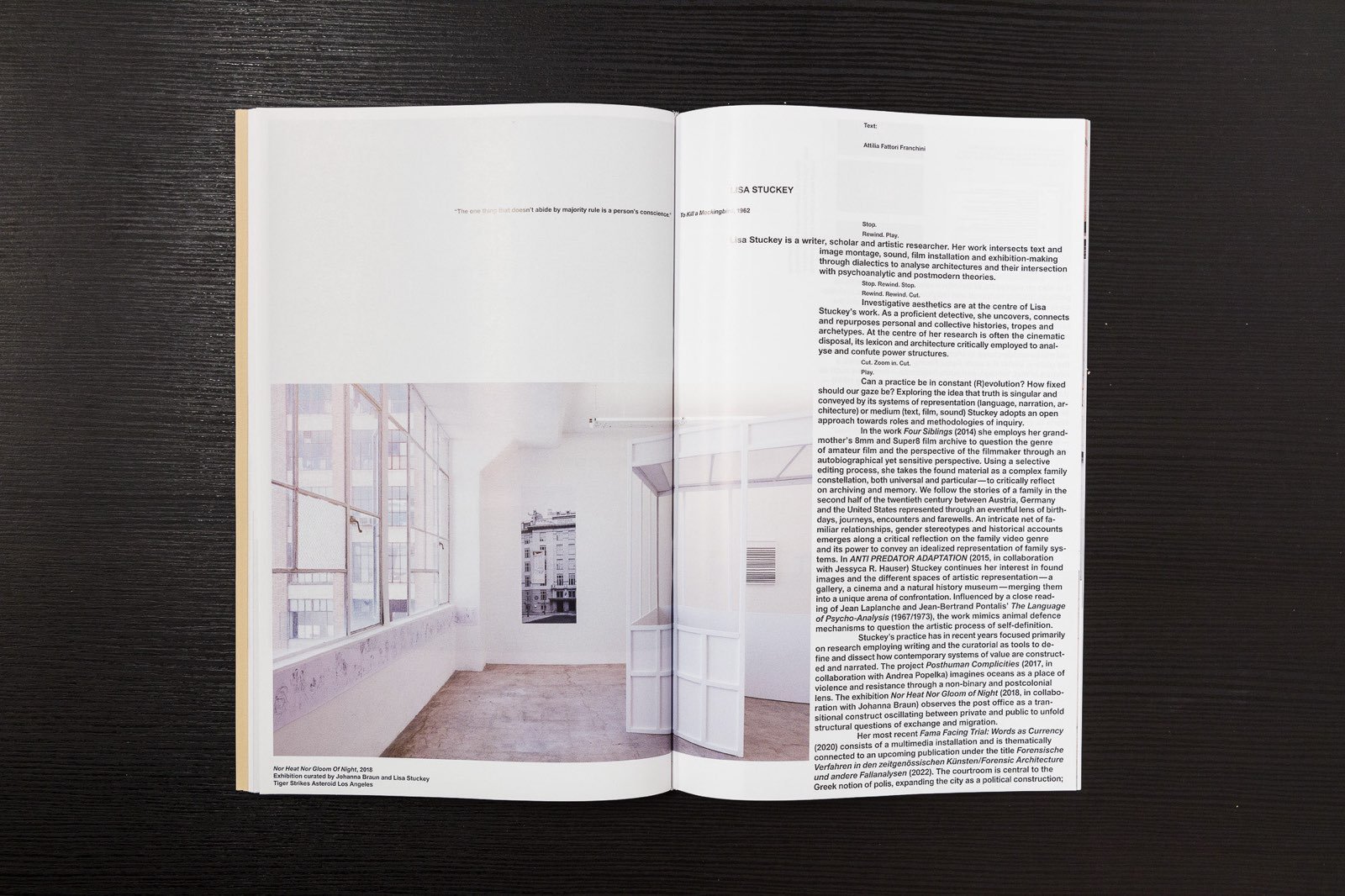
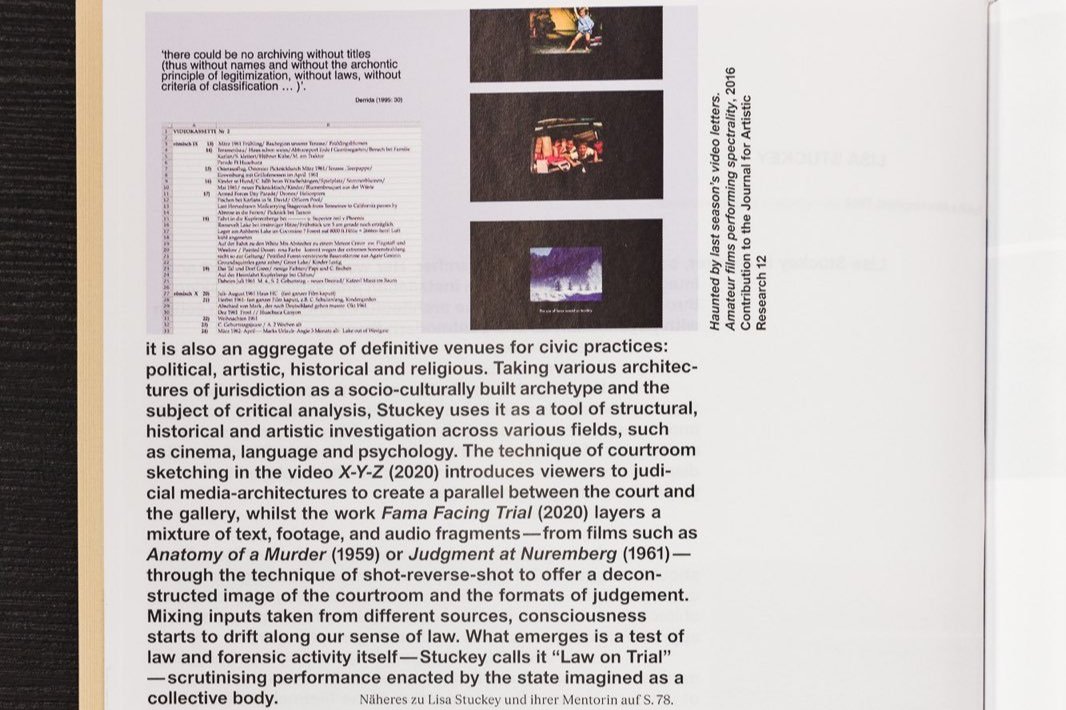
All images: kunst-dokumentation.com